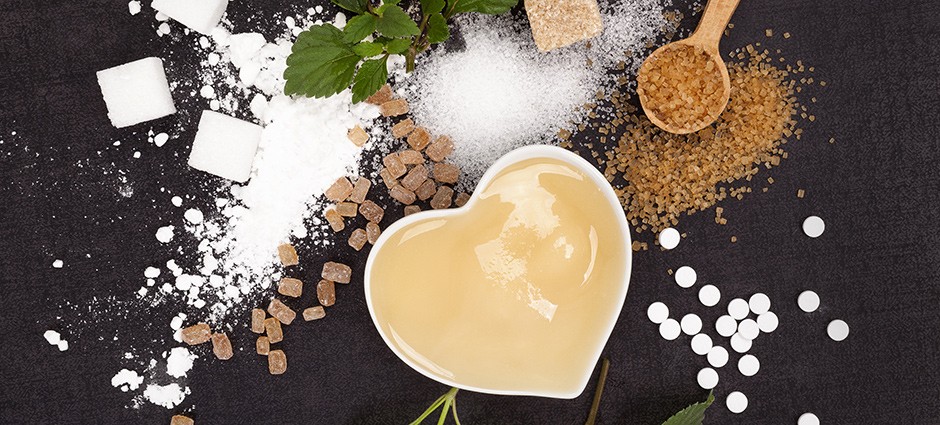Sugar is not a simple term, and today there are many types of sugar and sugar alternatives. Following are the most common sweeteners and what you need to know about them.
High-Fructose Corn Syrup: Processed from corn to contain more fructose than regular corn syrup, which contains only glucose. Formulations vary from about 55 percent fructose and 42 percent glucose (likely the most common formula) to as high as 90 percent fructose. Many experts today attribute high-fructose corn syrup to causes of diabetes and obesity.
Glucose: Your body’s preferred form of sugar and the type found in your blood. It’s a monosaccharide, which means it’s in its simplest form and can’t be broken down into other substances. There are small amounts of the monosaccharide glucose in fruits and vegetables. Much of the glucose we get from our foods come from the long chains of glucose that make up the starch in grains, potatoes, legumes and vegetables. The intestine breaks the chains down into the individual glucose molecules.
Sucrose: It’s a disaccharide, made of one glucose molecule and one fructose molecule, which means the body has to break it down. It’s found in fruits and vegetables. Most of the sucrose we consume is the refined white sugar extracted and purified from sugar cane and sugar beet that is in our sugar bowls and added to our processed foods.
Fructose: The sweetest form of sugar. It’s also a monosaccharide and is the primary sugar in many fruits. It’s the form most implicated in metabolic-disease markers.
Agave and Honey: Both are sweeteners derived from natural sources, although processing may negate any benefits that lends. Agave is especially high in fructose, while honey is more balanced between glucose and fructose and has less sugar overall.
Lactose: A naturally occurring disaccharide sugar found in milk, made of one glucose molecule and one galactose molecule.
Check Those Labels!
Most current nutrition labels make it hard to tell whether sugars occur naturally in a product or were added during processing. By Jan. 1, 2020, large manufacturers ($10 million or more in sales) will be required to include a line indicating amounts of added sugars. Smaller companies have until Jan. 1, 2021, to comply.
Sugar Alternatives
Don’t want to give up on sweet? These all-natural sugar alternatives are popping up more and more in packaged products—and beverages. You can even cook and bake with them.
Stevia: Derived from a small shrub native to South America, this sweetener provides 0 calories and has a 0 rank on the glycemic index, meaning it doesn’t raise blood sugar or insulin levels.
Xylitol: A sugar alcohol with a sweetness similar to sugar, extracted from corn or birch wood and found naturally in many fruits and vegetables. Has 2.4 calories per gram, 40 percent less than regular sugar.
Erythritol: Similar to xylitol, this is a sugar alcohol with even fewer calories: 0.24 calories per gram, about 6 percent of the calories of regular sugar.
Monk fruit: About 150–200 times sweeter than sugar, this sweetener is derived from the extract of the fruit, which is native to Southeast Asia, and has 0 calories and a glycemic index of 0.
In real terms
Calories. Grams. Teaspoons. Sugar-consumption recommendations come in many forms. Here, we help you understand what they look like in real life. The 2015–2020 Dietary Guidelines for Americans advocate limiting intake of added sugars to no more than 10 percent of all calories consumed. For someone eating 2,000 calories per day, that equates to:
- 200 calories from sugar
- 1.25 (12-ounce cans of Coca-Cola)
- 50 grams of sugar
- 12.5 teaspoons of sugar
- 11 Oreo cookies

